|
By Duke Autret, Myotherapist Chronic pain is a complex and persistent condition that significantly impacts an individual's quality of life. Managing it often requires a multi-pronged approach. Myotherapy, a specialised form of physical therapy, offers effective interventions for chronic pain, particularly ‘nociplastic’ pain, which lacks clear structural or inflammatory causes. This blog explores the management of chronic pain with myotherapy, including key interventions and techniques. Understanding Nociplastic Pain
Nociplastic pain is characterised by pain that arises from altered nociception despite no clear evidence of actual or threatened tissue damage or sometimes disproportionate to the level of tissue damage that may be there. This type of pain can be challenging to manage as it often involves central sensitization. Central sensitisation is where the central nervous system becomes hypersensitive to pain signals, which is in effect like the malfunctioning of the sensory system rather than the tissues themselves, perhaps like when your car has a sensor problem rather than actual part problem it is monitoring. Causes of Nociplastic Pain The exact causes of nociplastic pain are not well understood, but factors may include:
Symptoms of Nociplastic Pain Common symptoms can include:
Myotherapy offers a range of physical and educational interventions to manage nociplastic pain effectively. Physical Interventions: Movement and Exercise Therapy: Movement and exercise therapy, including graded activity and graded exposure, helps retrain the nervous system and reduce pain sensitivity. Adjunct Tools/Modalities: Techniques such as heat, cold, or electrical stimulation can alleviate symptoms by reducing muscle tension and pain. Manual Therapy: Manual therapy, including joint mobilisation and soft tissue techniques, can be beneficial when integrated with other treatments. Educational Interventions: Pain Neuroscience Education (PNE): Pain Neuroscience Education (PNE) helps you understand the nature of pain and how to manage it better. Here are some key principles to keep in mind: 1. Pain is an Output from the Brain: Pain is not just a signal from damaged tissue. Your brain processes information from all over your body and creates the sensation of pain. This means pain is not only a physical sensation but also involves cognitive and emotional experiences. 2. Pain Does Not Always Indicate Harm: Understanding that pain is not always a sign of serious damage can help reduce fear and anxiety. Many factors, such as stress, emotions, and past experiences, can influence pain. 3. Changing Your Perspective on Pain: By seeing pain as a signal that your brain is sending to make you pay attention to your body, you can take steps to manage it more effectively. This can help reduce the intensity and frequency of pain. 4. Techniques to Manage Pain: Relaxation and stress reduction techniques like deep breathing and progressive muscle relaxation can help manage pain by reducing muscle tension and anxiety. Regular practice of these techniques can make a significant difference in your pain levels. 5. Listen to Your Body: It's important to listen to your body and take care of yourself in ways that feel safe and comfortable. This includes practising good posture, engaging in regular exercise, and maintaining a healthy lifestyle. Progressive Muscle Relaxation (PMR): PMR is a technique used to reduce muscle tension and anxiety, promoting relaxation and pain relief. Steps for Progressive Muscle Relaxation:
Graded Exposure Therapy: Graded exposure helps individuals gradually confront and overcome activities or movements they avoid due to fear or pain, reducing pain and improving function. Protocol for Graded Exposure:
Graded exposure gradually helps people confront their fears or anxieties. By slowly exposing you to things that make you anxious, your brain learns these things are not as dangerous as initially thought. This builds tolerance and reduces anxiety over time, helping you regain control over your life. Comprehensive Pain Management When structural or biomechanical explanations fall short, pain often results from central sensitisation, neuroplastic changes, psychological factors, lifestyle influences, and environmental factors. Effective management involves a multidisciplinary approach, combining physical and cognitive interventions tailored to individual needs. Common Explanations in the Pain Process:
Chronic pain, particularly nociplastic pain, requires a comprehensive approach to management. Myotherapy offers effective interventions, including physical techniques and educational strategies, to manage pain and improve quality of life. By integrating myotherapy into your treatment plan, you can address the multifactorial nature of chronic pain and take proactive steps toward relief and improved well-being. You can book online to start the process now! By Rachael Bird, Myotherapist
The time it takes for your body to start feeling better after seeing a myotherapist can vary depending on several factors, including the nature and severity of your condition or discomfort, the specific techniques used by the myotherapist, and your individual response to treatment. Here are some general considerations:
Getting a Remedial Massage or Myotherapy appointment is becoming even easier now that we have two new therapists joining our Rowville team! Join us in welcoming our two great new practitioners to the Simple Wellness clinic! Kel Levi will be joining us from Wednesday July 27th. Kel is an experienced Myotherapist who is currently working alongside AFL Premiers Melbourne Football Club helping their players during and after their matches. She's also a qualified personal trainer, and has a wealth of knowledge in the health and fitness realm. She has a great firm massage style, loves to use dry needling to help reduce pain and improve movement, and can use her extensive background in fitness and exercise to help you find ways to stretch and strengthen your trouble areas with ease. Myotherapy and Remedial Massage with Kel can be claimed through our HICAPS machine with private health insurers like BUPA, Medibank, HCF and all other health insurers. Kel will be available: Mondays and Wednesdays 9-12, and occasional Fridays (when Melbourne Footy Club don't need her expertise in the club rooms!) Colette Corr is our new student Myotherapist, who is starting with us on Tuesday August 2nd. Colette is a final year Bachelor of Health Science Myotherapy student, which means she's completed the vast majority of the 3 year Bachelor degree program and is down to the last few subjects, including student clinical hours. We'll be offering discounted treatments with Colette while she's finishing up her degree. In addition to Myotherapy, Colette is also a yoga instructor with over 5 years experience, and loves to work with people with chronic pain and hypermobility/Ehlers Danlos Syndrome. As Colette is a student, private health claims can't be made for treatments with her. Colette will be available: Tuesdays 2-7 and Saturdays (alternating between morning and afternoon shifts) As always, bookings with our team of fantastic therapists can be made instantly online or by phoning us on 03 8204 0970.
Predicting how long your body will take to recover from injury or pain can be difficult, because each individual person will have many different factors that can influence their pain.
Your recovery time will depend if your pain is from an acute or chronic issue. We use the terms "acute" and "chronic" to describe your injury or pain type - acute being a new, fresh injury, usually where tissue damage has occurred; and chronic being a longer term condition or pain that continues well after expected tissue healing should have occurred. Acute injuries can include things like ankle sprains, hamstring tears, shoulder dislocations. Usually they happen quickly and are immediately obvious that something is wrong. Maybe you've lifted something too heavy in your gym routine and felt a twinge of pain in your back as a muscle has strained, or you've missed the last step and felt a sharp shock of pain in your hip or knee. High impact blows can also cause acute injuries, like if you have a fall, get in a car accident, or get kicked from a horse. Chronic pain can stem from an originally acute injury. Its common for people to have ongoing pain or sensitivity after an injury that causes a lot of damage. Chronic pain can also be part of many health conditions, like hypermobility and Ehlers Danlos Syndrome, Fibromyalgia, Multiple Sclerosis, and other conditions that affect your nervous system or connective tissue. Chronic pain also describes pain that comes from repetitive patterns of movement or positioning, usually starting as a mild irritation that can build up to be very painful, like De Quervains or "Mummy Thumb" which a lot of new parents experience as intense wrist and thumb pain from holding and feeding their new baby. As a very generalised observation, acute injuries tend to follow fairly predictable recovery pattern as long as normal tissue healing occurs. In fact, the pain of an acute injury can often go away even before the tissue healing has completed, like in the case of a mild ankle sprain where you may be able to weight bear and return to normal movement within a week, even if the tissue around the ankle is still in repair mode. The severity of the acute injury will usually give us an indication of your expected healing time - a mild injury takes a shorter time to recover than a severe injury, this follows our common sense understanding even without medical training. But what about chronic injuries or pain? How can we estimate how long an old injury will take to feel better? And importantly, can we realistically expect long term pain like a very old injury or pain from a lifelong disorder or disease to fully recover? This is where pain starts to become complicated, because in chronic pain patients there are lots of factors involved in the pain outside of damaged muscles, joints or nerves. Chronic pain in one area of your body can lead to pain developing in other areas when your body tries to find different ways of getting things done. If gripping a heavy object becomes painful in your wrists, you may find yourself balancing it on your forearms and tilting backwards from your pelvis instead. As a short term work around this might be ok, but over time you might find yourself with chronic wrist pain AND chronic lower back and hip pain. Unfortunately, if you have a few "layers" of pain areas, this can mean that its likely to take longer to unravel some of the patterns that have lead your body to being in pain. Chronic pain tends to be unpredictable in how long it may take to resolve. For people with pain stemming from lifelong conditions like genetic disorders, autoimmune disease or neurological disorders, the pain is likely to come and go in flares, and our aim for these people is to reduce the severity and frequency of the flares that are a part of their condition. What other factors can contribute to how quickly you recover? Adaptations to movements and positions: Firstly, we need to identify movements or positions you currently do that either exaggerate or relieve your pain. Some of these will be easier to adapt than others - if you notice sitting longer than an hour increases your pain, an easy adaptation may be to get up every 30-60 minutes for a brief stretch. If you spend the majority of your day sitting at your computer, we can look at starting and ending your day with a back extension exercise to decompress your lower back. If we find some movements that relieve your pain, we can look at ways of increasing your time spent doing those movements. We know that we won't be able to change all of the repetitive movements and actions that are needed in your daily life at work and at home, so realistically understanding that some of those things are contributors to your pain means we need to focus on the things we can influence so we can reduce the impact of the things we can't change. There are lots and lots of options for changing some of the movement and position habits your body has built up, and our therapists can help with some suggestions during your appointment. Exercise: Finding a suitable type of exercise for your pain can be very helpful in building strength around the area and in stimulating your body to release its own brand of feel good hormones and neurotransmitters that reduce pain sensations. Exercise might sound very overwhelming to start off, especially if you have a lot of interconnected areas of pain, so our therapists will start you at an appropriate level for where you are at. That might be some mild stretches, a gentle walk or swim, or even a visualisation of doing certain movements. Diet/Nutrition: What you eat influences how your body repairs and recovers. If you have food sensitivities or intolerances this can also effect your bodies inflammatory response - the more inflammation, the more sensitive our nervous system is to pain. If you were already eating a good diet prior to your injury, you are likely in a better position to recover quicker than someone who was eating nutrient-poor food or a diet that caused inflammation. A nutritionist may also be able to recommend supplements that can support your bodies natural healing processes. Fitness & General Health: You may be more likely to have an easier recovery from injury if you were in fairly good health and physical condition before your injury. Your recovery may be slower if you have pre-existing health concerns, including things like diabetes or autoimmune disease. Its never too late to start working towards a healthier lifestyle! Sleep: Good sleep is crucial to good healing. Pain can make sleep very difficult, and this can become a bad cycle of intense pain leading to poor sleep, resulting in feeling fatigued, which causes pain to increase, and so on. Breaking this cycle and getting some proper rest can help with recovery. Using extra pillows to support your body may allow you a longer and deeper sleep. There are also lots of great sleep apps or meditations that some people find useful in falling asleep or getting back to sleep if you wake up in the night. Speak with a nutritionist or pharmacist about night time supplements that can help aid with sleep. Nervous System Health: Chronic pain is often just as much about your nervous system as it is about your musculoskeletal system. This means if you are highly anxious, stressed, depressed, or just have a lot on your plate right now, that your pain levels may be higher than normal. The nervous system controls your entire body, so while we're not saying "your pain is in your head, you're making it up!" what we are saying is that if your nervous system is working overtime then its much more likely that your pain will be noticeable even in response to small actions. Think of it like a kettle that has just boiled, it takes much less time to reboil the kettle because its already hot. The nervous system is similar, it will take much less action for your nervous system to turn up the volume on your pain because its already on high alert. Finding ways of supporting your nervous system is crucial for long term chronic pain conditions. This is also why medications for anxiety and depression are often prescribed for people with ongoing pain. There are lots of natural or herbal supplement options available through Naturopaths and health stores. Setting a nervous system health routine for yourself is also a hugely valuable part of managing stress and overwhelm, and this might include things like mindfulness, meditation, relaxation, affirmations, or anything else that helps you to tone down nervous system activity. Self Care Tools: Treatments with your practitioner are great, but having the tools and know-how to apply treatment principles at home goes a long way to helping you take charge of your recovery. We can teach you how to use a range of tools for releasing tight spots in your body so that you have some tricks up your sleeve for between treatments. Treatment: Get the type of treatment that your body responds to. Some people respond best to hands on treatments like massage, cupping and dry needling. Some people go better with active exercise based treatments. Our therapists can advise you of the treatment types that have been reported to work best for your type of pain, but ultimately each individual body can react differently, and we'll work towards finding the best combination of treatment techniques for you. Be aware that trying too many treatment types at once for the same issue can make it very difficult for any of your health practitioners to determine which treatment is effective. This is also why we'll often pick a small number of Myotherapy techniques to use in each treatment, because if we use absolutely everything we know all at once, its very hard to know what worked and what didn't. Go into your first treatment expecting that it might take your body a little while to start making long term changes, especially if your pain has been there for a long time and if repetitive movements and positions seem to be a big part of your pain hanging around. Try your first appointment with us for $97 (normally $115) Book an appointment with us now. When you have chronic pain, you get very familiar with pain that makes itself known every day. You may have some good days and some bad days, but either way its good to have a toolkit of things you can do at home to help reduce, manage or avoid pain flare ups. This is even more important now, while Melbourne is under Stage 4 Restrictions in response to COVID19 and seeing your Myotherapist is no longer an option. Your toolkit will likely be different to someone elses, but these are some of the things that you can incorporate at home to help keep pain as low as possible.
Gentle movement - Walking, yoga, pilates, dancing, cycling, and other low impact exercises to keep your joints and muscles mobile. What you can achieve may change day by day, work within your own limits. There are plenty of free or affordable online options, my favourite that I'm personally using throughout lockdown is Erica Webb Yoga & Pilates virtual studio ($37 a month for unlimited classes) Stretching - Make time to stretch each day, especially the muscles that feel tightest. If you're working from home, its really easy to get stuck sitting for hours at your desk - or couch, coffee table, hammock, whatever your work from home set up looks like. Self care tools - Foam rollers, tennis balls and spiky balls, acupressure mats, TENS machines: these can all help reduce muscle pain and tension. Don't have one? You can pick these up cheap online on eBay or through sports stores. Hot or cold therapy - Heat packs, hot water bottles, electric blankets to keep you warm and take away some of the ache. Ice packs or cool compresses can work better for acute inflammation areas or for numbing persistent pain. Nutrition and hydration - Eat well, drink water, and avoid foods that tend to flare up your pain. Pre-plan meals and snacks so you can have some easy to grab options on bad pain days where you don't have the energy to cook (or clean!) Stress management - Easier said than done during a pandemic, right? Find things that bring down your stress levels, that will be different for each person, but some classics include reading, listening to music, taking a nap, having a warm soak in epsom salts, booking a telehealth appointment with a counsellor, writing in a journal. Seek support - Don't suffer alone! Reach out for a conversation with your friends, family, coworkers, neighbours. Don't forget there are plenty of services to support you, including talking with your GP, a counsellor, and support groups online. Pain relief - I know a lot of our patients choose not to use pain relievers, but in these times where its hard to get access to hands on treatments that help, you may find that taking pain relief is helpful. This may include prescribed medications from your GP or over the counter recommendations from your pharmacist. Gels and creams - There are a heap of options for topical pain creams, the most commonly used ones include Deep Heat, Fisiocrem, and Voltaren. My personal favourite is a non-pharmaceutical blend by Doterra called Ice Blue Rub, its got a cooling menthol effect that is fairly long lasting, but it is on the pricey side for a cream. A little goes a long way! Sleep - What can you do to optimise your sleep cycle? A well rested body has the best opportunities to repair and recover. Some things to experiment with are an earlier bed time, switching off screens well before bed, changing your pillow, listening to relaxing music. We hope it won't be long now until we're able to offer hands on treatments again. As soon as we know more, we'll make an announcement and get our online booking page active again. Does this sound familiar?
These can be signs of hip bursitis, which is an inflammatory condition that can be a very common cause of hip pain. The good news is that we help people with this all the time, and we can get you started on a treatment program to help reduce the pain and build up the strength in your hip! What is Bursitis?
Bursitis is the name of a condition where the bursa in your joints become inflamed. Bursa are the fluid-filled sacs that help cushion joints and reduce friction as the joint moves. Healthy bursa are important in pain free movement. When the bursa becomes inflamed it swells and becomes highly sensitive. The joint doesn't move easily, and the muscles surrounding it can become painful and tight trying to protect the joint. Bursitis can cause acute pain that increases with physical activity. If the inflammation remains active for a long time, the pain can progress to a chronic state. What causes hip bursitis? The most common causes of bursitis are things like overuse or strain on the hip joint. This can happen through a high level of exercise or activity, or through repetitive unbalanced activities like holding a baby on one hip, or leaning your weight to one side to avoid pain in other areas like your lower back, knee or ankle. Other causes can be less common things like infection or gout within the joint. People with autoimmune conditions like rheumatoid arthritis can be more vulnerable to developing this inflammatory condition. How can we help? Remedial massage and myotherapy can help relieve painful symptoms of hip bursitis. We can reduce muscle tension around the hip joint, and assess the other areas above and below the painful hip so that we can address any issues that are contributing to your bursa becoming irritated. Taping for stability and support can be very useful, and can help relieve pain for longer. We can give you a program of exercises to gradually strengthen your hip without increasing the irritation. Book a time with us to get the ball rolling. Should I see a doctor? If your hip pain has been ongoing for quite some time, it can be a good idea to check in with your doctor. Your GP can advise you if a course of anti inflammatory medication will be helpful for you, or you can ask your pharmacist for an over the counter recommendation for symptom relief. We're lucky to be located inside Together Medical Family Practice in Knoxfield, where you can get access to a fully Bulk Billed GP in the clinic with us and an understanding pharmacy team downstairs. Anyone with long term pain will likely relate with this statement my sister recently made about her chronic back pain and exercise: "Yeah, the pain flare ups seem to be less frequent with exercise. But also feels hard to convince myself to exercise, because if I stretch too far it hurts real bad, too??" This situation is so common with people I see every day in the clinic. The pain has been there for a long time, but thinking on times that they've been most physically active, that tends to be the times that the pain has been its least intense, frequent and invasive. So if we know that staying active can change the intensity, frequency and overall impact pain has on our lives, why is it so hard to convince ourselves to do the exercises? Its an internal fight that a lot of people have with themselves. In practitioner language we call it Fear-Avoidance Behaviours, which basically means not doing the beneficial thing because of the fear of causing pain even if you know long term the beneficial thing reduces the pain intensity and/or frequency. It’s one of the biggest struggles for people with chronic pain.
I think a lot of the solution to it is finding a really enjoyable activity. In my sisters situation, she started taking MMA classes last year. A weird choice for someone who is already in pain, right? But even though shes learning some serious fighting moves and coming away with some proper bruises, her long term back pain has been more under control than it had been in ages. I explained it to her like this. "You’re not there to slug away at a pointless activity that you don’t enjoy. You have fun, you learn, it’s interactive, the people are nice and supportive, it’s social, it’s not 100% competitive, you get to do it as a family activity with Matt and the kids. So it’s probably so much more appealing than going for a run or going to lift weights at a gym by yourself for an hour a few days a week." And I think she got it! "Absolutely! Ohh that all makes so much sense... it's so true though. Going to the regular gym or even working out at home is like... ugh. No thanks. But going to MMA is so easy?! Because it's just fun... I mean, it's actually a really complicated work out, and some of it SUCKS... but is somehow so damn fun?!" While she's having all this fun kicking and punching, she'll definitely be using a lot of back muscles to coordinate and control the movements, and core muscles, hip stabilisers, all the areas that single exercise prescription focuses on. The difference is instead of doing separate specific exercises for each muscle group, it’s all just rolled into a sequence of movements and blows and dodges, mixed in with an instructor that makes her laugh and being able to spar with her partner. This is way more enjoyable for her than doing strict sets and reps of isolated exercises. Some people love doing the specific exercises, and guess what, thats awesome too because if you love it and enjoy it, you're more likely to do it! Lets talk neuroscience We already know that almost any kind of exercise produces endorphins, which are these wonderful little brain chemicals (neurotransmitters) that are natural pain and stress relievers. Endorphins act a little differently on the Peripheral Nervous System (all the nerves in your body that aren't part of your brain or spinal cord) and the Central Nervous System (the brain and spinal cord) They work by binding to opioid receptors in the Peripheral Nervous System. Its like your own personal stash of codeine, and your body makes it in response to exercise! They also work by reducing the amount of inflammatory chemicals that the nerve produces. In the Central Nervous System, endorphins also bind to the opioid receptors. Here their effect is to reduce another neurotransmitter called GABA. With GABA reduced, your brain is able to produce more dopamine - the pleasure neurotransmitter! Interestingly, these opioid receptors in the brain are most abundant in regions of the brain that control pain regulation. So how is it more helpful to have a fun active hobby? Researchers found that endorphin release varies depending on the intensity of the activity, suggesting that higher physical intensity leads to increased endorphins compared to more moderate activity. But is the endorphin rush better from a fun activity vs an activity that you find boring or tedious? I'm honestly not sure, but what I do believe with certainty is that most people are way more likely to actually DO the exercise if its something they find fun and enjoyable and actually have a desire to do it. Realistically, it probably doesn't matter WHAT you do, more that you just DO IT! Do you know what sets off your pain into a flare up? We call these triggers, and they can be different for everyone. Knowing your triggers can be particularly helpful if you have a pain condition that has a flare/settle cycle, because it can help you avoid triggering things or situations, or help you prepare for an oncoming flare. We often see people who don’t know what their triggers are. This can be a pretty scary situation for them, because their pain seems random and uncontrollable, but for most people there are at least some consistent triggers for their pain and with a little investigation we can usually pin down some of the big ones. Some of the most common triggers include: Stress – Of course! Stress and demands pulling in every direction is bad enough when you don’t have pain, but this is one of the really big triggers for setting off bad pain flares. Over doing it – Pushing yourself too hard is probably one of the most common triggers for an increase in pain. This can look like lifting something heavier than you’re capable of, walking further than you normally can, rushing around doing more errands than usual. The trap is usually that you have a day where you actually feel pretty good and capable, so you do as much as you can while you're feeling good and then - bam! On comes the flare from over doing it! Change in air pressure – Theres not a lot of great research on this, but I can tell you from clinical experience there are a huge number of people who get pain flares when the weather changes, particularly if a storm is about to roll in. Headaches, migraines, joint pain, nausea, nerve pain – these can all flare if the air pressure changes suddenly. Sometimes people affected by this trigger can tell its going to rain hours before it starts because they start to feel those symptoms. Temperature – Sudden changes of temperature can also flare up some pains. This usually happens in the peak of summer or winter, especially if you go from a cool air conditioned space into the Melbourne heat wave, or getting out of your warm car into the cold air of a single digit day. Medication – Changes to medication or forgetting to take medication can set off a pain flare up. If its from changes to medication, make sure that you note it down and let your GP know when you see them next. Sleep – Usually it’s a lack of sleep that causes the pain to increase. Sleep deprivation can lead to feeling run down, slowed thought processes, memory issues, low mood, and can increase sensitivity to pain. I recently wrote a blog with some general tips for aiding your sleep cycle, which you can read here. Illness and infection – Picking up a cold or virus that’s going around can certainly flare up existing pain conditions. Your body uses a lot of extra resources when it needs to fight off illness or infection, so this can be particularly involved for people who already have weakened immune systems. Certain movements – Sometimes your pain can be increased by specific movements, like shoulder pain that hurts more if you reach overhead. As Myotherapists, we can help you identify the specific movements that are responsible, and create a treatment plan that addresses those areas so we can get you moving better and with less pain. Food – Food allergies or sensitivities are very common, and some of these can trigger pain and inflammation. Common ones can be things like gluten, sugar, and processed foods. A Nutritionist like our friend Samantha Gemmell can help you identify foods that may be causing you to have flare ups and help you plan some alternatives. Chemicals – Sensitivity to chemicals can also increase pain. Consider the types of dish liquid, washing powder and cleaning chemicals you use at home. If you consistently get flare ups after using these, it may be time to try alternative products and see if it makes a difference. Body products – Similar to chemicals for cleaning your house, the products you use on your body can also trigger pain in some people. This can include body wash, hair care, skin care and make up, deodorants and dental products. These are just some of the common things that we see. We always recommend that you keep a good eye out and become a little investigator into your own triggers. Sometimes a trigger or symptom journal can help in identifying the things that are setting you off. If you want to do this, we suggest you start by taking note each time you experience a flare up and jot down anything you have done, eaten, interacted with around the time of the flare up. This will help you start to notice patterns that your pain follows. Some things will be easier to avoid than others – for example, not eating gluten will be much easier to do than not being exposed to air pressure. But for things like weather that are out of your control, you can make a mitigation plan by checking the Bureau of Meteorology and planning to be somewhere comfortable and safe if a major storm is predicted. We can also help you identify some of these triggers and help you make plans for your triggers. Talk to us about this at your next appointment so that we can support you. Have you ever found that gentle movement such as yoga helped to alleviate your symptoms, but you struggle to go to a regular class? Here at Simple Wellness Myotherapy, we know how good moving your body can be - for your muscles, joints, tendons and ligaments, as well as your nervous system and your mind! But we also know that it can be tough to get to a class when you're feeling sore or brain-foggy. That's why we sat down with Erica Webb, a Yoga, Mat Pilates and Somatic Exercise Coach for a chat. If you're looking to incorporate movement in the comfort of your own home, her Mindful Movement Virtual Studio might be for you. Hi Erica! Thanks for joining us.
Could you start off by telling us a little about yourself and the Mindful Movement Virtual Studio? Thanks guys! I’m a Yoga, Mat Pilates and Somatic Exercise Coach based in Melbourne, Australia. As well as a mindful movement coach, I am a mother to two young boys and a writer and illustrator. At my core I'm curious, kind, committed and just the right amount of quirky! I truly believe that movement is powerful. Mindful movement is more powerful still. That’s why I created The Mindful Movement Virtual Studio. The Mindful Movement Virtual Studio is an online Yoga, Pilates and Somatic Exercise Studio. It allows you to do your movement practice from anywhere, anytime. But it’s more than just a library of classes. It’s also a space where you’re supported! We talk about mindset, forming habits and other practical elements that make a home practice do-able and sustainable. As part of the Studio, we also offer live masterclasses, weekly Q&As and more. Who is this Virtual Studio for? People who want to feel better in their own bodies! Many of my clients are busy women who want to feel better and know they need to commit to look after themselves and take responsibility. It’s also for people who simply don’t get the chance to go to a local yoga class. It might be that you’re juggling around kids, or that you have pain or a condition that makes it difficult for you to make a regular class. Is there anyone who wouldn’t benefit from this service? I can really only think of two:
Does someone need to have experience with yoga to benefit from the Virtual Studio? Not at all! Many people who join are brand-new to yoga. But for those who do know their yoga, it’s beneficial because we use a lot of techniques and poses that aren’t commonly used in the average yoga class. Do we need to commit a lot of time to see the benefits? No! Most of the classes are 30 minutes or less. There are some that are only 5 minutes, and some go up to an hour. So it’s more about committing little chunks of time on a regular basis, rather than committing to a dozen hours every single week. Do we need to be skinny, super fit, bendy or decked out in the latest activewear to do these classes? Firstly: you can rock up in your PJs if you want to! Secondly, these classes are designed to be inclusive – you can be whatever size, fitness level and flexibility level and still reap the benefits. Do we need fancy equipment? A few of the classes incorporate props, but there are always at-home alternatives you can use. Many people use pillows and blankets as their props! However, you can always filter the classes to find a prop-free video if you need. Are the classes appropriate for people who have pain or ongoing injuries? If you have a condition or injury that might impact your ability to engage in physical activity, I always recommend getting clearance from your health professional first. With that in mind, the majority of classes are gentle and have variations to suit almost any issue. For example, some of the classes can be done while seated. Some of the more advanced classes may not suit for some types of injury or pain that affect the function of your muscles. If you’re unsure, you’re welcome to contact me directly about a specific class and whether it’s right for you. What if we need a little extra support with anything? I’m here to help! I make sure that I’m available for people to ask questions. Feel free to reach out if you need anything. Ok, you’ve got us: how do we sign up? If you’re ready to prioritise YOU, make time to move well and feel well, head to this link to join! The doors are open until Sunday 15th March. Have you or someone you love been diagnosed with multiple sclerosis? The symptoms of this condition can range from uncomfortable to debilitating. But the good news is that manual therapy techniques that fall under the scope of myotherapy can help to alleviate some of these symptoms. Let’s take a look at how myotherapy can help with multiple sclerosis. What is multiple sclerosis? Multiple sclerosis, or MS, is an autoimmune disorder that affects the central nervous system. ‘Sclerosis’ means ‘scars’, which occur throughout the central nervous system. These scars interfere with the nerve impulses within the brain, the spinal cord and the optic nerves. Because the scars can occur anywhere throughout the central nervous system, different symptoms can manifest. Over 25,000 Australians have been diagnosed with MS. Most are diagnosed between the ages of 20-40, but it can occur in people who are younger or older. Women are far more likely to be diagnosed with MS. What are the symptoms of multiple sclerosis? Because multiple sclerosis can occur throughout the nervous system, there is a wide range of symptoms that people with MS may experience. No two cases are the same. However, symptoms will typically fall under five main categories:
How can myotherapy help with multiple sclerosis? This can really depend on the primary symptoms you’re looking to manage. However, myotherapy has a diverse range of tools and techniques that may help to minimise symptoms related to motor control, fatigue and neurological issues. Some of the symptoms myotherapy may help to relieve include:
Massage and multiple sclerosis One of myotherapy’s tools that has some promising research to back it up is massage therapy. There have been several small studies into the benefits of massage therapy for MS. They found that massage therapy was able to relieve pain, fatigue and quality of life. One study found that massage was more effective at relieving symptoms compared to exercise therapy. It also suggested that combining massage with exercise therapy could have even greater benefits. Managing multiple sclerosis symptoms with Simple Wellness Myotherapy Here are Simple Wellness Myotherapy, we have had patient outcomes such as:
Every case of MS is unique, so we cannot guarantee that you will achieve the same results. But we can say that our practitioners are experienced when it comes to MS, and will go the extra mile to help you find as much relief as possible. Simple Wellness Myotherapy also works as a healthcare provider for those receiving employment assistance through MS Employment Services. If you are receiving employment assistance, you can have a chat with your Occupational Therapist to see if myotherapy can be incorporated into your package. Ready to make a booking? Click here to visit our booking page. |
Meet Our Team
We have a team of great practitioners available 7 days a week at our Rowville clinic. Archives
July 2024
Categories
All
|
Got a question about Myotherapy?
Contact Mel by phone, email or Facebook
|
Simple Wellness Myotherapy & Remedial Massage Clinic
Shop 12B 150 Kelletts Rd Rowville VIC 3178 |
Phone us on
03 8204 0970 |




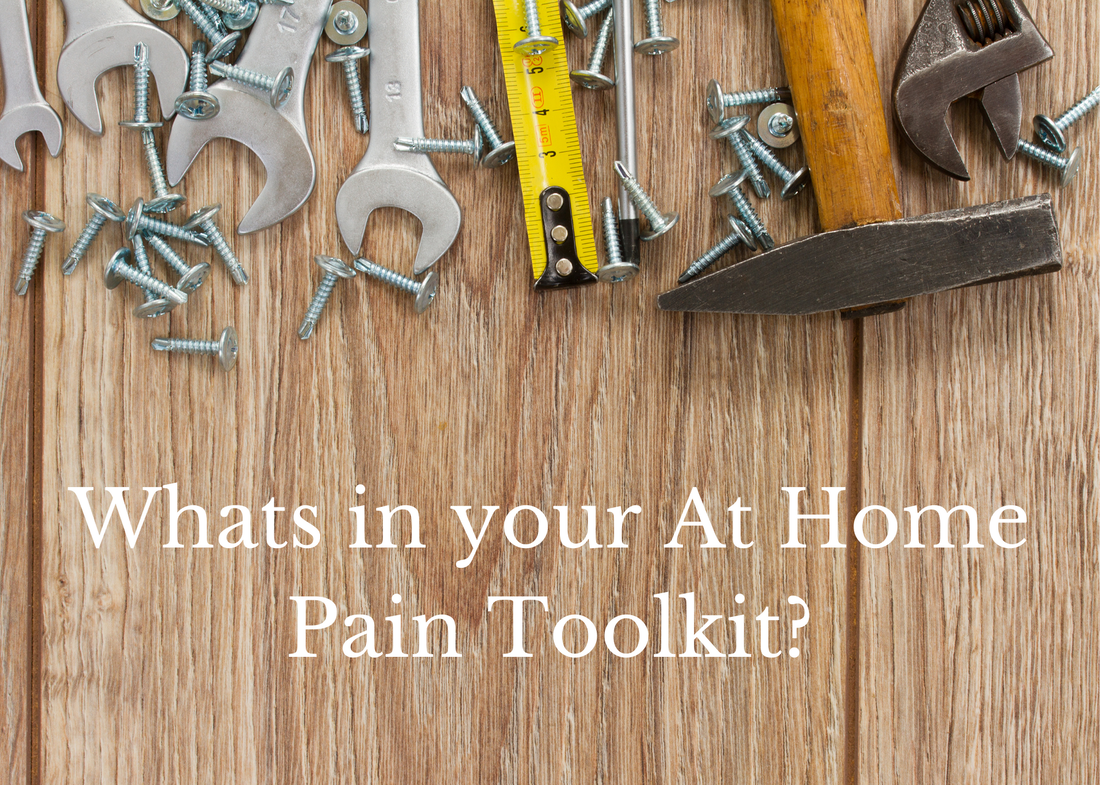
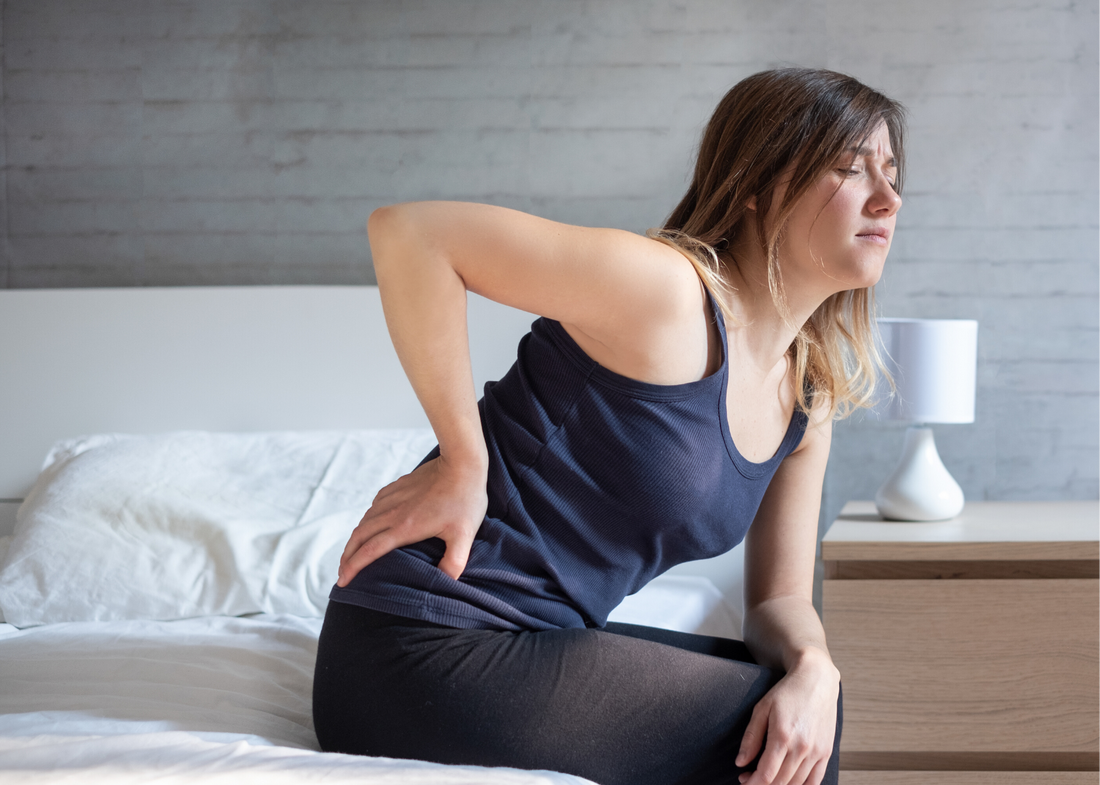
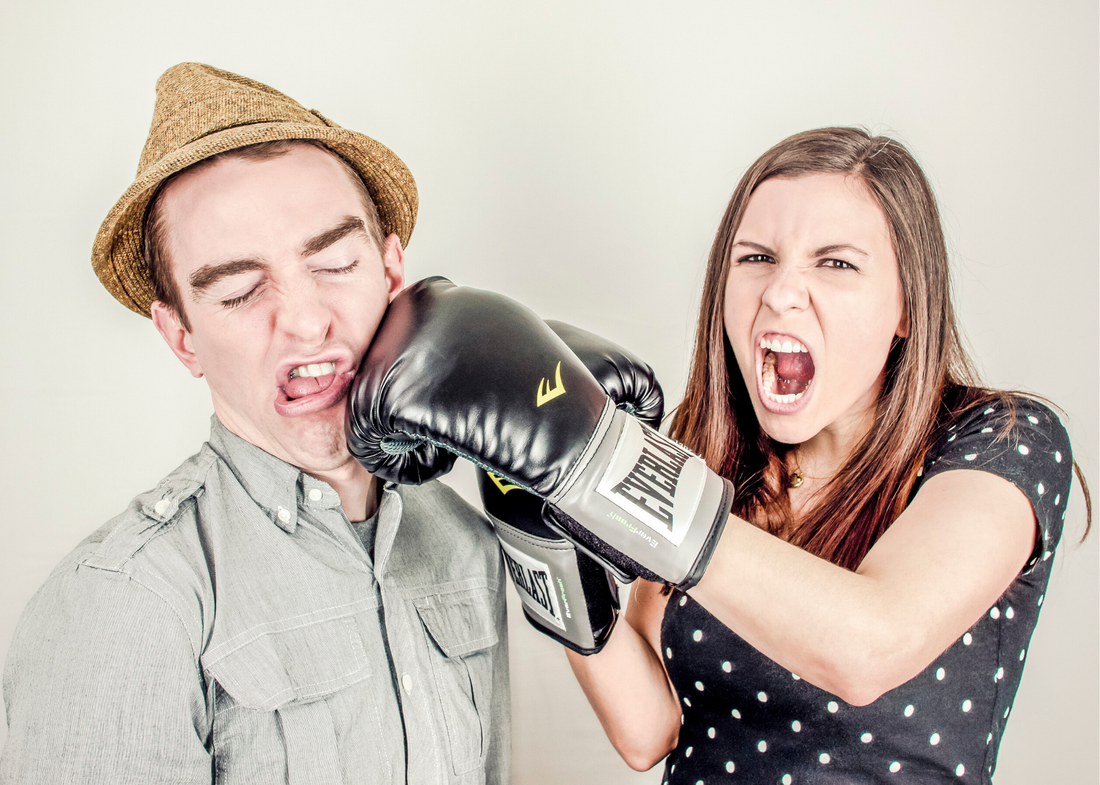
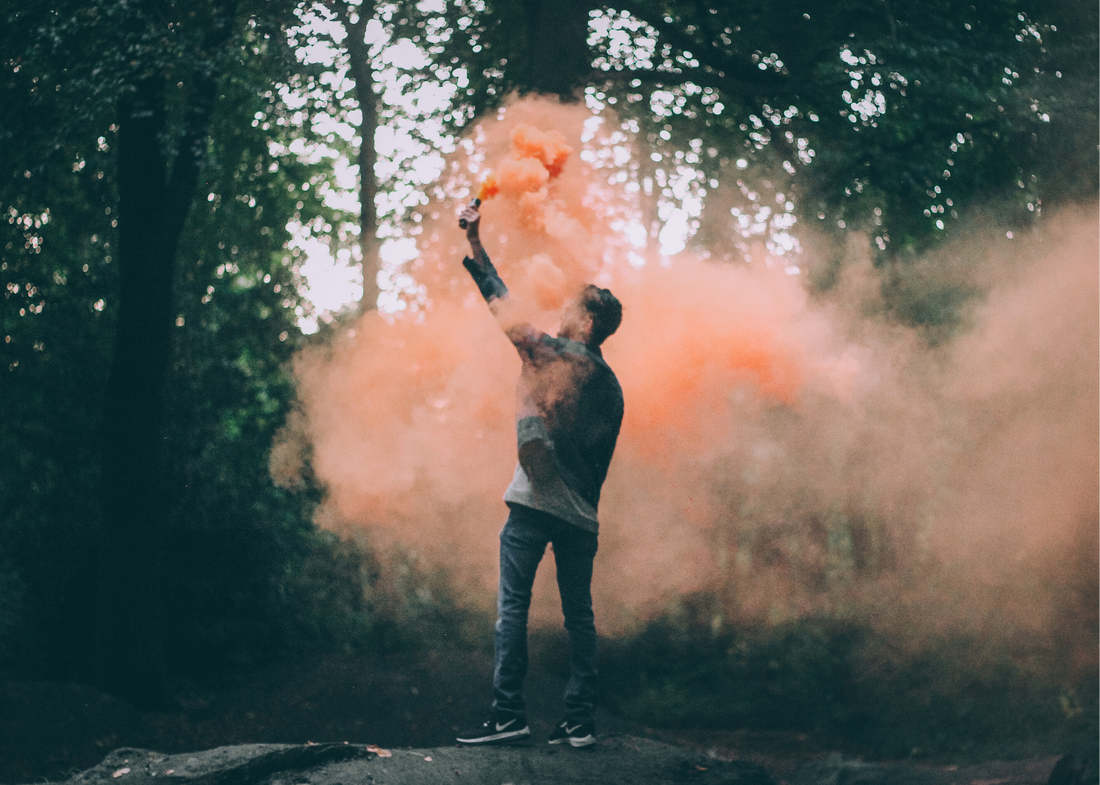
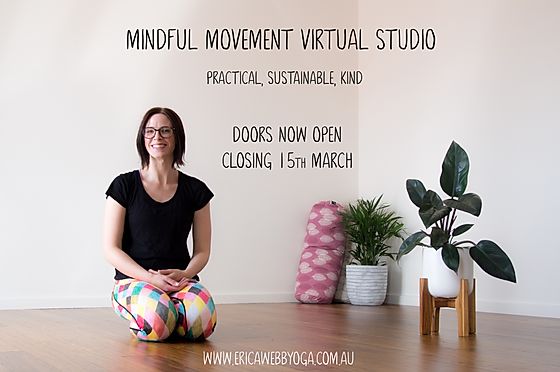
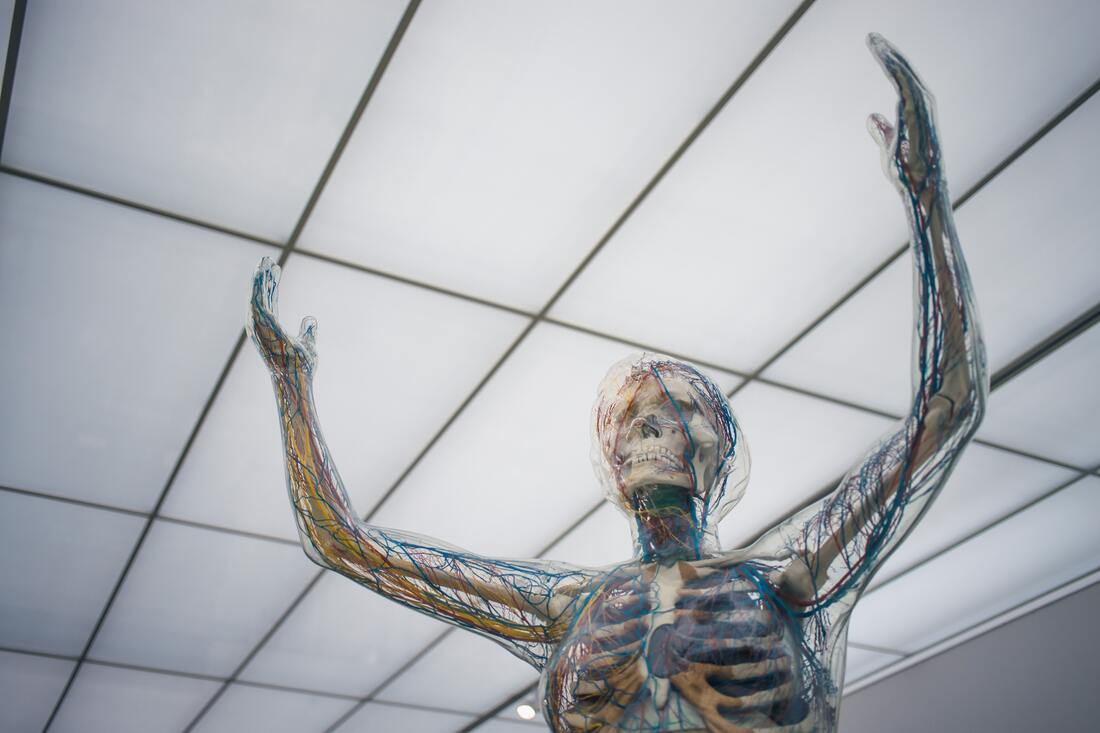
 RSS Feed
RSS Feed